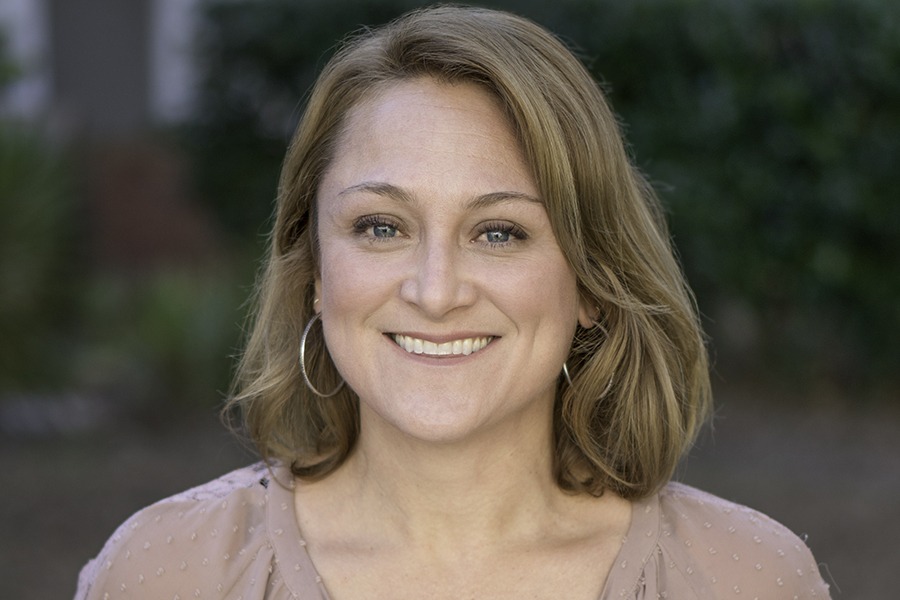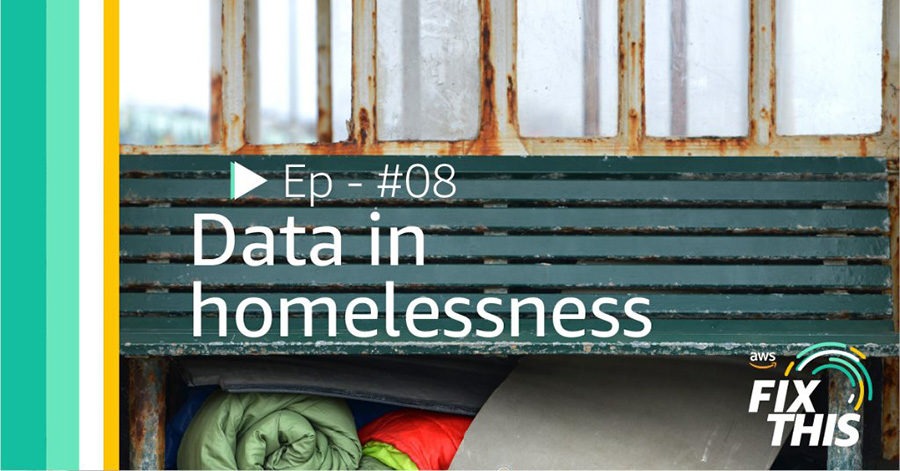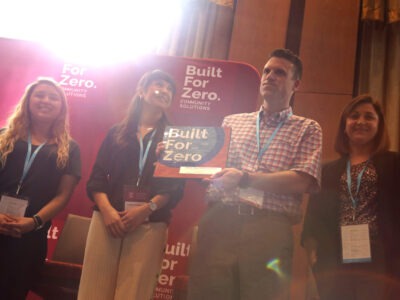Beth Sandor and Jake Maguire, Built for Zero Principals, spoke with Ray Rogers of Amazon Web Services (AWS) on the new Fix This podcast about how communities can harness real-time, quality data to end homelessness. We have seen 75 Built for Zero communities achieve quality, real-time data, a milestone essential to reaching and sustaining Functional Zero. Tools like the AWS cloud help remove silos in data and empower local leaders to share their progress on the path to ending homelessness, one population at a time.
Below, we’ve included excerpts from their conversation, which begins at 8:00:
How are you identifying the communities that you’re working in? How many are there, and what does it mean when you say that 13 of them have hit zero on some of the things that you’re tracking?
Beth Sandor: “Built for Zero is a national initiative of now 85 communities who have all committed to end homelessness for their veteran population and for people experiencing chronic homelessness, which is long-term homelessness among people who have disabilities. The reason to focus on those two populations is to really learn, what does it take to end homelessness for all populations? And those communities were identified by really being willing to raise their hand and figure out a complex problem, that no one has a silver bullet solution to right now. So we designed and launched Built for Zero to really figure out the answer to the question of: ‘what does it take to drive reductions and ultimately get to zero at a population level, across a geography, in a city or a county?'”
What are some of the main challenges that have historically faced communities that are trying to wrap their head around what homelessness looks like at the community level? At the state level, it sounds like siloed data is the main issue or lack of data.
Jake Maguire: “One of the first challenges that any community who’s committed to doing this work faces is having good information on who is experiencing homelessness across that the community at a person level. So, what are the individual needs of each person that would end their homelessness, both housing resources as well as services, that they would need to support them? But then also having a picture, not just at an individual level, but across the whole geography about how the population is changing over time. So, how many people are coming into homelessness every week or every month, how many people are exiting? Without that information, it’s very hard to know if anything that you’re doing is working. It feels like a daunting task. But we have now seen 75 communities be able to get that kind of data for one or more populations across their community. So we know it is possible. We believe no community in the country is going to end homelessness for one or more populations without that level of data, and the ability to pull insights from it.”

“If you are someone who cares deeply about your community’s ability to see fewer people on the street and in shelter, they cannot do that without real-time data. I think expecting that…asking the mayor, ‘do you know today how many people are experiencing homelessness?,’ and if that was fewer people than last month—that is at the heart of being able to solve this problem.”
— BETH SANDOR, BUILT FOR ZERO PRINCIPAL
That amount of data being stored and shared across organizations and sort of interacting and being de-siloed really requires the cloud. How can data be a unifying force and what is the future of data as it relates to ending homelessness? For the next five years or the next 10 years, how will we continue to scale this solution?
Beth Sandor: “I think the homelessness sector for decades has been way behind the rest of other sectors in applying, really using technology as an accelerator. It’s been very focused on compliance. I think there’s been this big shift we have to make both in our human capacity, as well as our technical ability, to really use data for improvement and learning as quickly as we can. So the challenge for Built for Zero, for Community Solutions as the catalyst behind this initiative, and for communities, is ‘how do we as quickly as we can bring those tools to the community leaders trying to do this work?’ So, I think that’s the challenge of the next 10 years for us…to use technology to clear the path on some of the biggest barriers our community faces.”
Jake Maguire: “What I want your listeners to understand is this: if it sounds really simple like, oh, we just need a really good database that can make good connections in real-time, and give a real-time analytics on a complicated problem and that doesn’t sound that hard. Yeah, it’s not, I mean—this is a problem we’ve solved. It’s just that we need the ability to solve it in this space. And I think that is where we have made this move to say, ‘let’s look to the tools that people are using in other sectors to solve similar problems.’ They’re using Amazon Web Servers, they’re using Tableau to visualize data…they’re using GIS mapping software. These tools exist. It’s just about how do we bring them into this space and then link them up to all the people that are doing this work.”
How can individuals and communities do more? Is there any way for them to stay plugged into what you’re doing or something that individuals can do that can help move the needle? How do people make a difference if this is something that they feel passionate about?
Beth Sandor: “One is to really expect and put pressure on your electeds to have good data and real-time data. It feels wonky. But I think if you are someone who cares deeply about your community or your city or your county’s ability to see fewer people on the street and in shelter, they cannot do that without real-time data. I think expecting that, asking for it, asking the mayor, ‘do you know today how many people are experiencing homelessness?,’ and if that was fewer people than last month—that is at the heart of being able to solve this problem.”
Listen to the full episode below:



